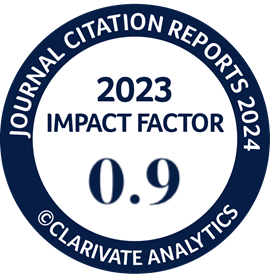Optimizing Shearing Characteristics of Sugarcane Leaves for Efficient Biomass Utilization and Machinery Design in the Sugar Industry
DOI:
https://doi.org/10.4186/ej.2024.28.1.1Keywords:
sugarcane leaves, shearing characteristics, shear strength, specific shearing energy, biomass utilizationAbstract
Sugarcane leaves, which are significant biomass residues from the globally important industrial crop, have potential as fuel sources for electricity generation. This study aimed to investigate the influence of moisture content, leaf region, and loading rate on shear strength and specific shearing energy of sugarcane leaves, focusing on the Khon Kaen 3 (KK3) cultivar. Experimental factors included four levels of moisture content (48.17%, 30.22%, 23.10%, and 8.90% w.b.), three leaf regions (lower, middle, and upper), and four loading rates (150, 250, 350, and 450 mm/min). Results showed significant impacts of moisture content, leaf region, and loading rate on shear strength and specific shearing energy (P < 0.01). The lower leaf region exhibited the highest shear strength (1.380 N/mm²) and specific shearing energy (12.184 mJ/mm²) at a moisture content of 48.17% w.b. and a loading rate of 150 mm/min. Conversely, the upper leaf region showed the lowest shear strength (0.372 N/mm²) and specific shearing energy (2.651 mJ/mm²) at a moisture content of 8.90% w.b. and a loading rate of 450 mm/min. To enhance cutting efficiency and minimize energy consumption during cutting leaves, it is recommended to sun-dry the leaves for 20-30 days before cutting to achieve a moisture content below 20% w.b. These findings could optimize cutting processes, machinery design, and agricultural practices in sugarcane harvesting and biomass utilization. This study is expected to contribute to understanding plant mechanical properties and provide insights for cutting devices and biomass processing systems. Further research should explore additional factors to advance efficiency and sustainability in the sugar industry and biomass utilization.
Downloads
Downloads

Authors who publish with Engineering Journal agree to transfer all copyright rights in and to the above work to the Engineering Journal (EJ)'s Editorial Board so that EJ's Editorial Board shall have the right to publish the work for nonprofit use in any media or form. In return, authors retain: (1) all proprietary rights other than copyright; (2) re-use of all or part of the above paper in their other work; (3) right to reproduce or authorize others to reproduce the above paper for authors' personal use or for company use if the source and EJ's copyright notice is indicated, and if the reproduction is not made for the purpose of sale.








